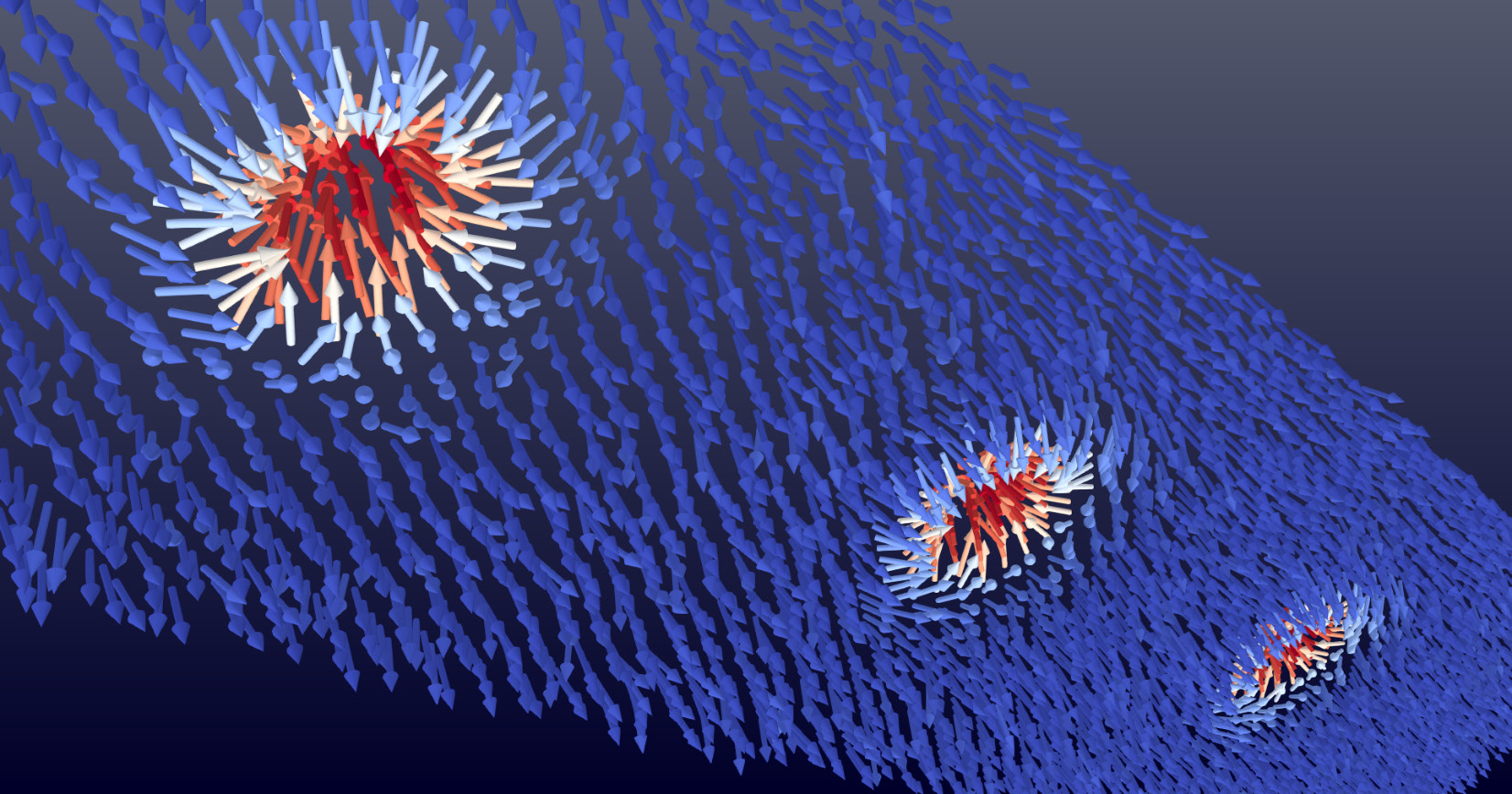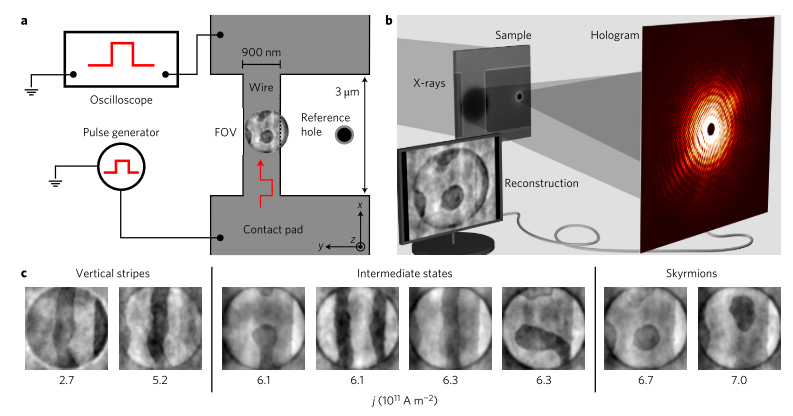
Ferri- and Antiferromagnetic Skyrmion Dynamics
Magnetic skyrmions are topologically stabilized spin configurations that, like domain walls (DWs), can react to external stimuli by collective displacement, which is both physically intriguing and bears promises to realize next generation non-volatile data storage technologies. However, skyrmions in ferromagnets were found to move at an angle with respect to the current direction, which complicates the use of skyrmions in wire devices because the motion component perpendicular to the current can move the skyrmion to a wire edge and thereby annihilate it. Antiferromagnetically coupled systems with compensated angular momentum (antiferromagnetic materials, such as compensated ferrimagnets and natural antiferromagnets) are capable of reducing this effect to zero and could additionally provide high speed dynamics to move DWs at unprecedented speeds. Skyrmions are predicted to move at even higher speeds in these materials, thus making these materials promising candidates for future spintronic devices.
Besides the compensation of perpendicular motion of skyrmions with respect to the drive, the predictability of their trajectories is also of major importance. Analytical equations of motion describe straight 180° DWs in the one-dimensional (1D) model while rigid, circular bubble domains and skyrmions are predicted to move according to the Thiele equation. However, this view has recently been challenged and thus research is required to determine how accurate the commonly applied theoretical models are in different situations.
In our group, we study skyrmion dynamics in static and real-time experiments at various large-scale facilities around the globe. The techniques we most commonly use are x-ray holography [1] and x-ray microscopy [2] that can reveal the positions, speeds and shape of spin structures. Most recently, we investigated how strongly deformed DWs and bubble skyrmions move in uncompensated ferrimagnetic Pt/CoGd/W in response to current pulses and found skyrmion speeds in excess of 500 m/s – faster than any other group has reported thus far.


Researchers:
Siying, Liza
Recent Publications:
112. E. A. Tremsina and G. S. D. Beach, “Atomistic simulations of distortion-limited high-speed dynamics of antiferromagnetic skyrmions,” Phys. Rev. B, vol. 106, p. L220402 (2022). (view pdf)
102. F. Büttner, B. Pfau, M. Bottcher, M. Schneider, G. Murcurio, C. M. Gunther, P. Hessing, C. Klose, A. Wittmann, K. Gerlinger, L.-M. Kern, C. Struber, C. von K.-S. J. Fuchs, D. Engel, A. Churikova, S. Huang, D. Suzuki, I. Lemesh, M. Huang, L. Caretta, D. Weder, J. H. Gaida, M. Moller, T. R. Harvey, S. Zayko, K. Bagschik, R. Carley, L. Mercadier, J. Schlappa, A. Yaroslavtsev, L. L. Guyarder, N. Gerasimova, A. Schertz, C. Deiter, R. Gort, D. Hickin, J. Zhu, M. Turcato, D. Lomidze, F. Erdinger, A. Castoldi, S. Maffessanti, M. Porro, A. Samartsev, J. Sinova, C. Ropers, J. H. Mentink, B. Dupe, G. S. D. Beach, and S. Eisebitt, “Observation of fluctuation-mediated picosecond nucleation of a topological phase,” Nat. Mater., vol. 20, p. 30-37 (2021). (view pdf)
101. L. Caretta, S.-H. OH, T. Fakhrul, D.-K. Lee, B. H. Lee, S. K. Kim, C. A. Ross, K.-J. Lee, and G. S. D. Beach, “Relativistic kinematics of a magnetic soliton,” Science, vol. 18, p. 1438-1442 (2020). (view pdf)